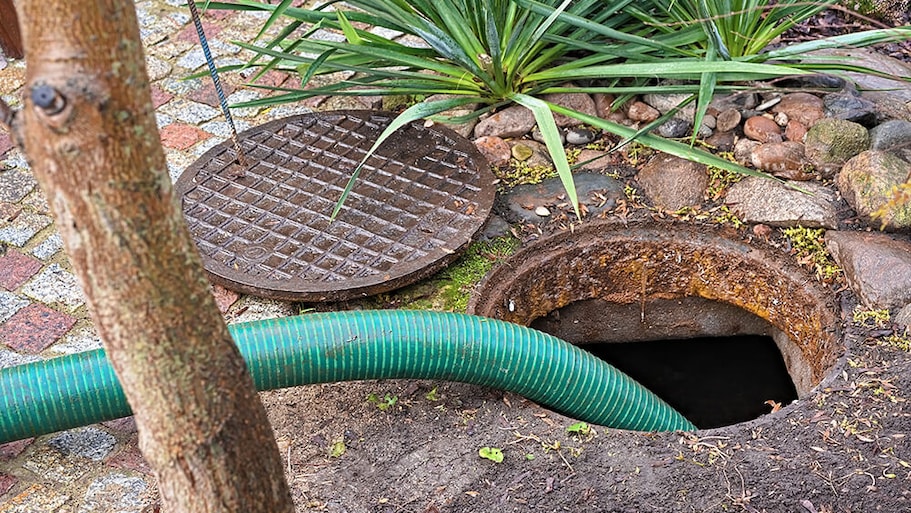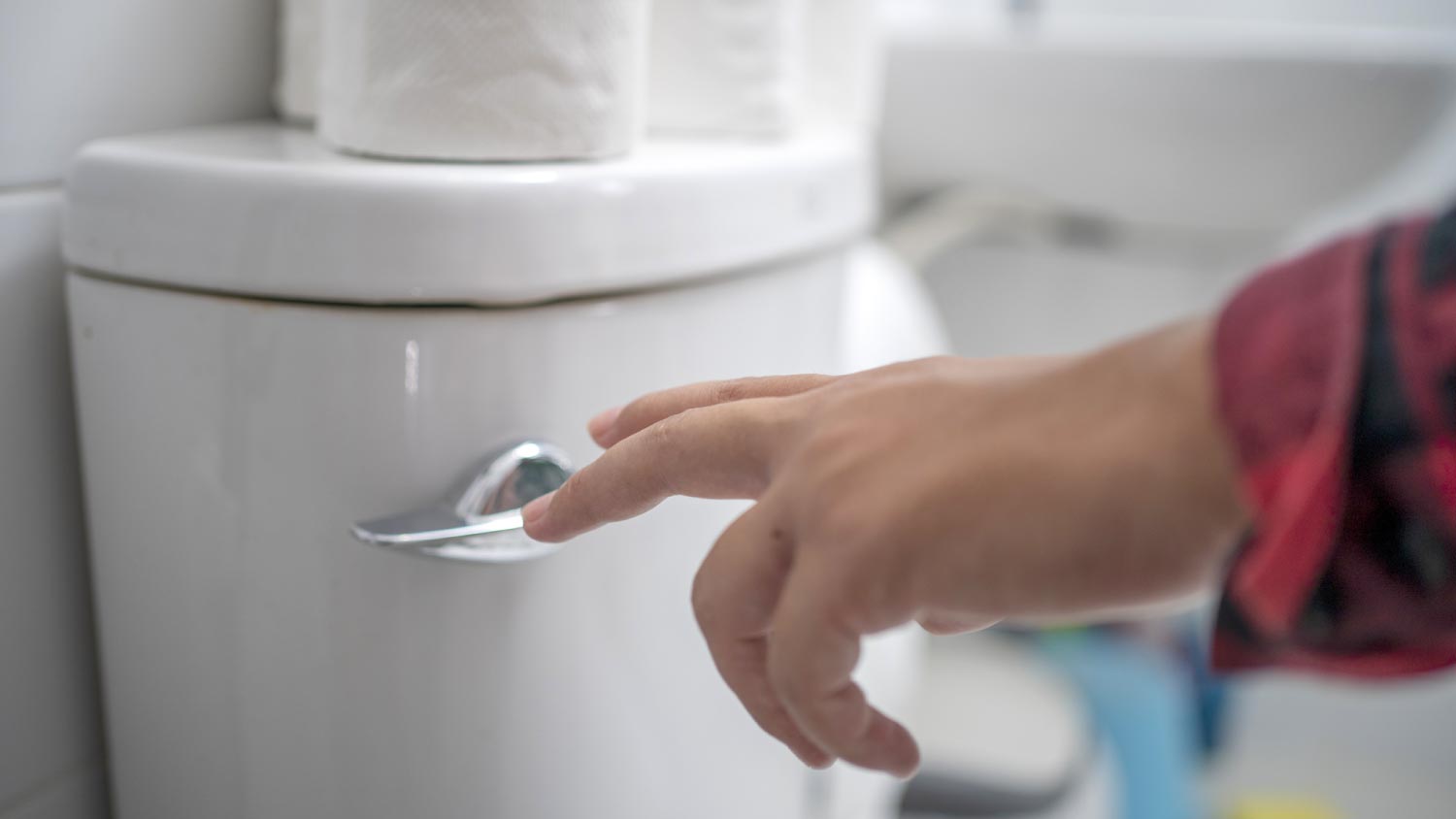
Caring for your septic system is crucial to ensuring its long life. But how much does it cost to pump a septic tank? We explore the different cost factors.
Dig into this project with the proper knowledge


If you’re moving to a rural or mountainous area, your property may not have a municipal sewer line. Designing and installing a septic tank involves correctly meeting many local codes. Depending on your location and soil condition, the process typically takes two to four months, but it can be longer. Learn all about septic tank installation requirements and how long each step takes.
Getting a perc test is essential to understand your soil type, layering, and how quickly or slowly the soil absorbs water. A home buyer or real estate agent can request a perc test through the local health or environmental department. You can also have a local septic tank installer handle it for you. The perc test results are vital in determining if you can use a conventional system or need to install an alternative septic system.
You also need a site survey from your municipality to determine your property's:
Topography
Proximity to bodies of water and other environmentally sensitive areas
Available space for a drain field
Well location (and that of neighboring wells)
Approximate time to complete: Two to three weeks, from scheduling the perc test and site survey to getting the results
A perc test measures the rate of soil absorption—essentially, how quickly the soil can drain water. It's a necessary step before installing or making changes to a septic or drainage system.
Most municipalities require a licensed contractor to build a septic system, as it is a complex plumbing project that must adhere to many local codes. Licensed contractors must pass professional exams about state codes, septic tank installation requirements, construction processes, and safety considerations.
Septic systems must be specifically designed for your property and location. If a septic system fails or is improperly installed, it can be expensive, not to mention a health hazard. Septic systems need to pass inspection once they're built. If the system isn't installed to code, you can incur fines or experience leaks and structural problems on your property.
Contact at least three local licensed septic tank installers to ensure you hire a knowledgeable installer. The contractor will come to your property to assess the project and give you a quote. Septic systems cost $3,500 to $11,400 on average but can be higher for properties that require alternative septic systems.
Aim to work with an experienced contractor who understands your local code and has built the type of septic system you need. Verify that the contractor has favorable reviews.
Approximate time to complete: Two weeks

Your septic tank installer should take time to plan the best system for your soil and property. Your contractor should follow local codes as they determine the essential details of your system:
If one or more types of septic systems are possible, your contractor will present the options to you. Most installers recommend a conventional septic or mound system if an alternative is necessary. There are other alternatives, such as recirculating sand filters and aerobic treatment systems. Each system type has pros, cons, costs, and maintenance requirements. Review the details with your contractor to decide on the plan for your property.
Most local codes dictate that the septic tank has to be at least 10 feet from your home, though some require it to be further from your foundation. Local codes also provide guidelines on where the septic tank can be in relation to property lines.
You may only need a 750-gallon tank for a one- to two-bedroom home. Some municipalities require a minimum of 1,000 gallons for home tanks, the average size for two- to four-bedroom homes. For larger four- to five-bedroom homes, tanks as large as 2,000 gallons are available.
Concrete septic tanks are the most prevalent, but some are plastic or fiberglass. Although concrete is vulnerable to cracking, it’s less susceptible to damage during installation and won’t float if it floods. Plastic tanks are light and easy to install, but they’re not approved in every state and don’t last as long as concrete. Fiberglass septic tanks are rust-resistant but are more vulnerable to damage during installation and may shift in the soil over time.
Contact your local health or environmental department if you’re replacing a septic system and need a copy of your septic system design. They can often provide an “as-built” drawing.
Approximate time to complete: Two to three weeks
Your contractor must pull permits from your municipality (local health or environmental department) before breaking ground on your septic system. The city approves the contractor’s plan, including details such as septic tank placement. A septic system permit's cost and application process varies from one local authority to another but usually falls around $400. Most contractors include the price of the permit in their quotes. You may also need a permit for pumping and disposing of waste further down the line.
Approximate time to complete: One to two weeks
Your contractor must prepare the site before installing the septic tank and system.
If you’re replacing an old septic system, your contractor will pump out and remove the sewage in the tank. They'll also need to remove any pieces that won't be a part of the new system. In most cases, the contractor must turn off the water supply for two to five days.
The base under the septic tank should be level, and the hole for the tank needs to be the correct width and depth based on the tank size. Your contractor will level the ground and dig trenches for the pipework.
Approximate time to complete: One to two weeks

Your septic tank contractor will install your new tank and build the system to code. The contractor will set up the pipes, drain field, and any other components of your system.
Approximate time to complete: One to two weeks
Your contractor will cover the septic system with appropriate layers of soil and gravel. Your installer can recommend the best septic tank landscaping ideas, such as grass or ground cover. It's best to avoid putting deeply rooted trees and plants near your septic system, as it can cause damage, clogging, and drainage issues.
Time to complete: One week
Most local authorities require an inspection before using a new septic system. Your contractor should schedule this with your local municipality. The inspector ensures you’ve met all septic tank installation requirements. They’ll test to ensure the system works properly and that there are no leaks, mechanical issues, flooding, or draining problems. If there are any issues with the tank, drain field, or pipes, your contractor can help fix those before you use the system.
Approximate time to complete: One week
From average costs to expert advice, get all the answers you need to get your job done.

Caring for your septic system is crucial to ensuring its long life. But how much does it cost to pump a septic tank? We explore the different cost factors.

Need to know what sewer line replacement costs in Los Angeles, CA? This guide will help you prepare to budget for sewer line replacement done by local contractors.

Need to know what sewer line replacement costs in Detroit, MI? This guide will help you prepare to budget for sewer line replacement done by local contractors.

A clogged main sewer line can lead to sewage leaks in your yard or home. Look for these eight signs of a clogged septic line to fix this problem ASAP.

Not all cesspool messes need a total clean-out. Learn how to clean a cesspool so you know whether you can tackle it yourself and when to call in a pro.

A saturated leach field can lead to costly damage to your plumbing and yard. Learn how to fix a saturated leach field with this guide.